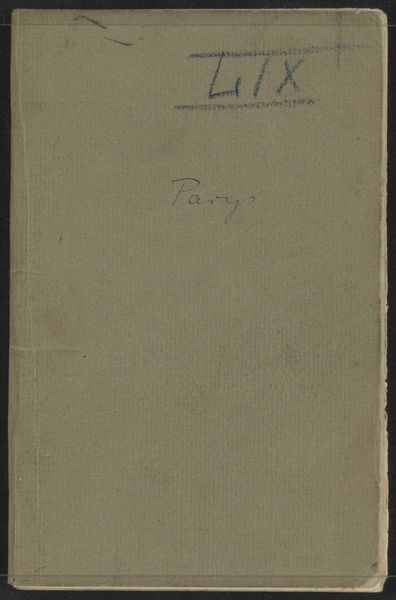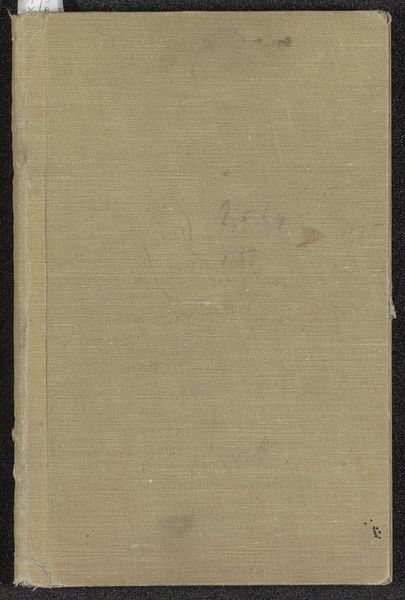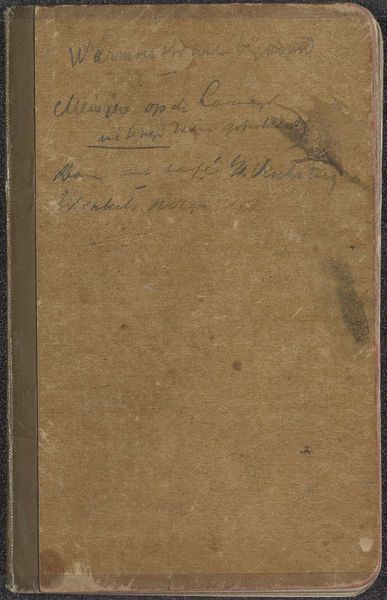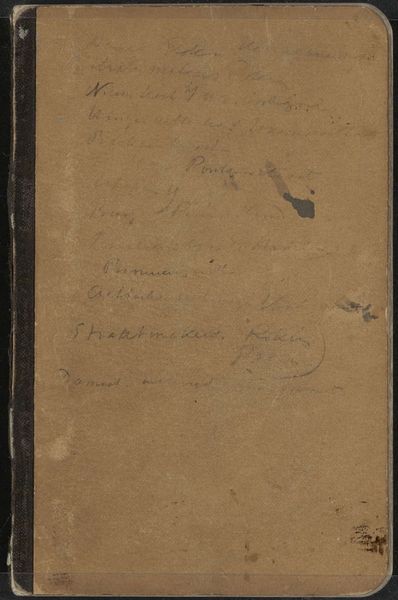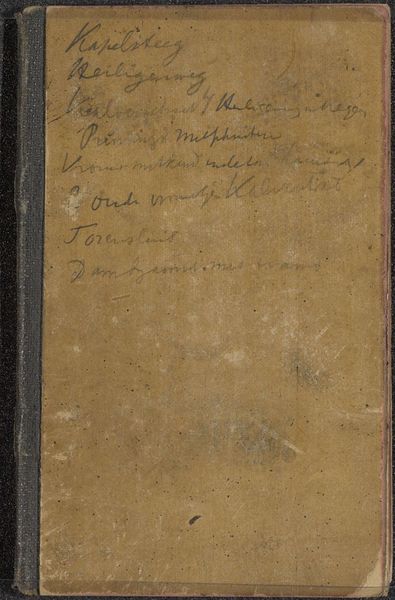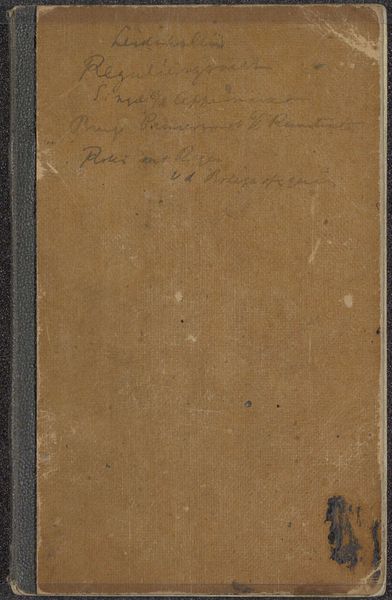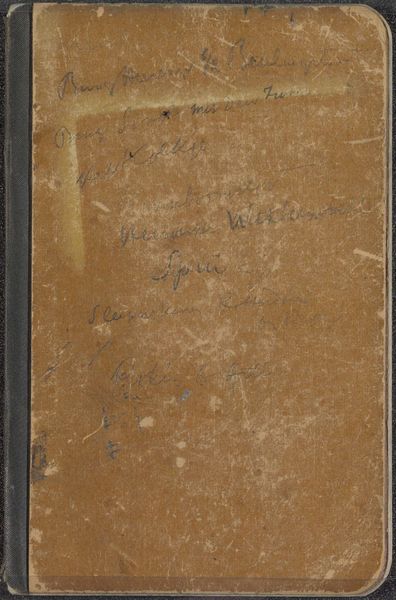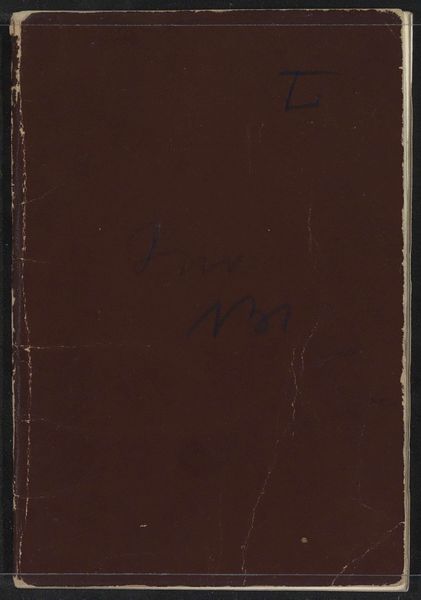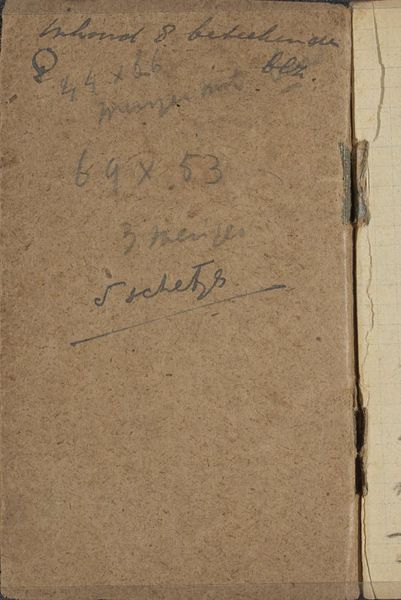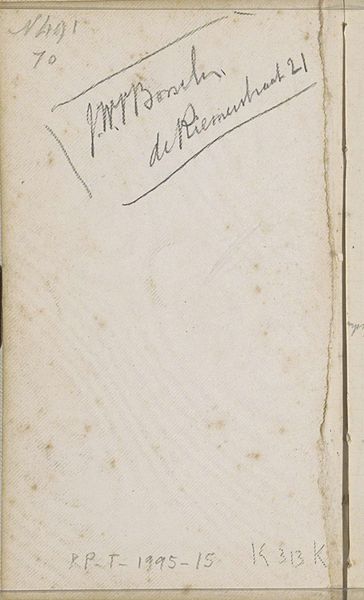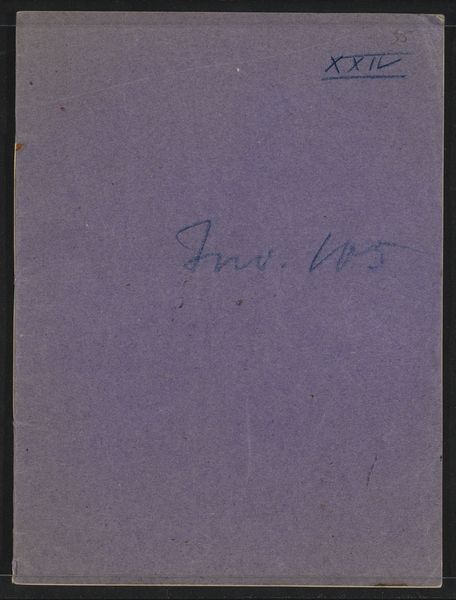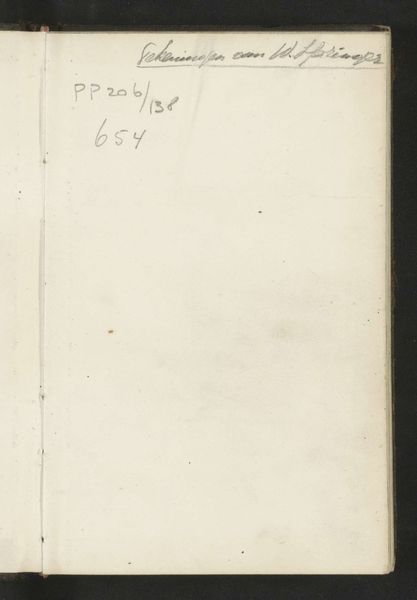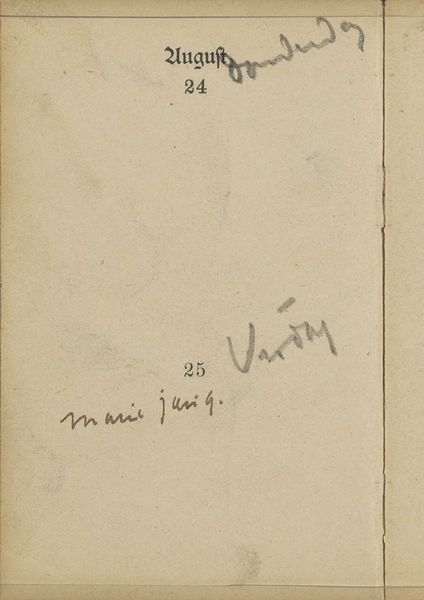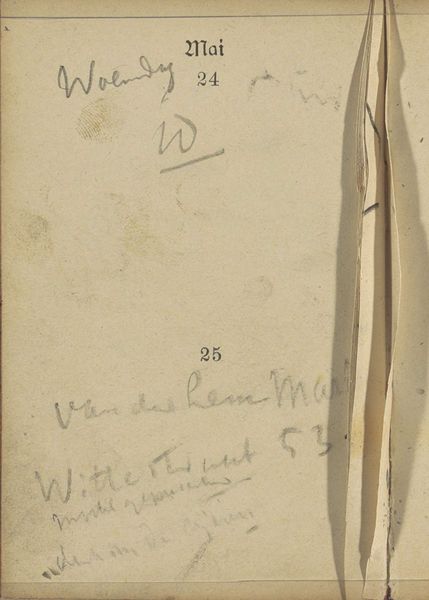
Dimensions: height 170 mm, width 110 mm, thickness 6 mm, width 220 mm
Copyright: Rijks Museum: Open Domain
Curator: Here we have Isaac Israels’ "Sketchbook XXXIX with 51 pages," believed to have been compiled between 1887 and 1934. It is currently held at the Rijksmuseum. Editor: It has a strange somberness to it. I wonder what secrets it holds... the cover, with its muted tones, presents a striking, self-contained composition; it seems like it could be read as minimalist painting, doesn't it? Curator: Sketchbooks, historically, do operate as personal documents and memory keepers, more intimate than a formal, finished work. The 'XXXIX', along with "Paris" and some handwriting on the cover, it evokes a traveler's journal, a silent witness to moments. The repetition of "X" might refer to personal journeys and experiences within those years. Editor: Visually, that muted grayish paper provides such a textural ground; against which that handwritten script leaps. The cursive itself almost takes on a performative aspect. It has the appeal of a lost language; indecipherable in detail. It draws the viewer in, yet offers so little... a play in structural revelation. Curator: Indeed, handwriting offers more than just text—the angle of the strokes, the pressure, they become embedded with meaning. Even just these slight suggestions on the cover are imbued with significance. Editor: There’s an immediate material presence. I’m already projecting onto its pages a matrix of drawings in charcoal or possibly hasty impressions done in watercolor. I wonder about the interior architecture, the rhythmic sequencing across the pages. How each drawing or mark dialogues, in that interior landscape. Curator: Its value really is as a portal to understand the workings of the artist's mind; capturing fragments of daily existence. We see the world through their eyes, filtering into raw observations before translation into any larger work. It acts as an authentic expression of an artist's consciousness and personal history, and of the continuity between cultural periods. Editor: Its modest scale and simplicity allow viewers the space to fill the blanks... or at least consider filling them, as one projects various thoughts of its owner; the cultural echoes begin almost to overwhelm what must simply be drawings on pages in ink. I like its understated eloquence. Curator: For me, it embodies how everyday artifacts carry the potential to be invaluable windows to cultural history and psychology. Editor: And for me, its materiality—paper, ink, script—opens portals to imagined worlds—or rather, worlds constructed and deconstructed within the theater of our minds.
Comments
No comments
Be the first to comment and join the conversation on the ultimate creative platform.
